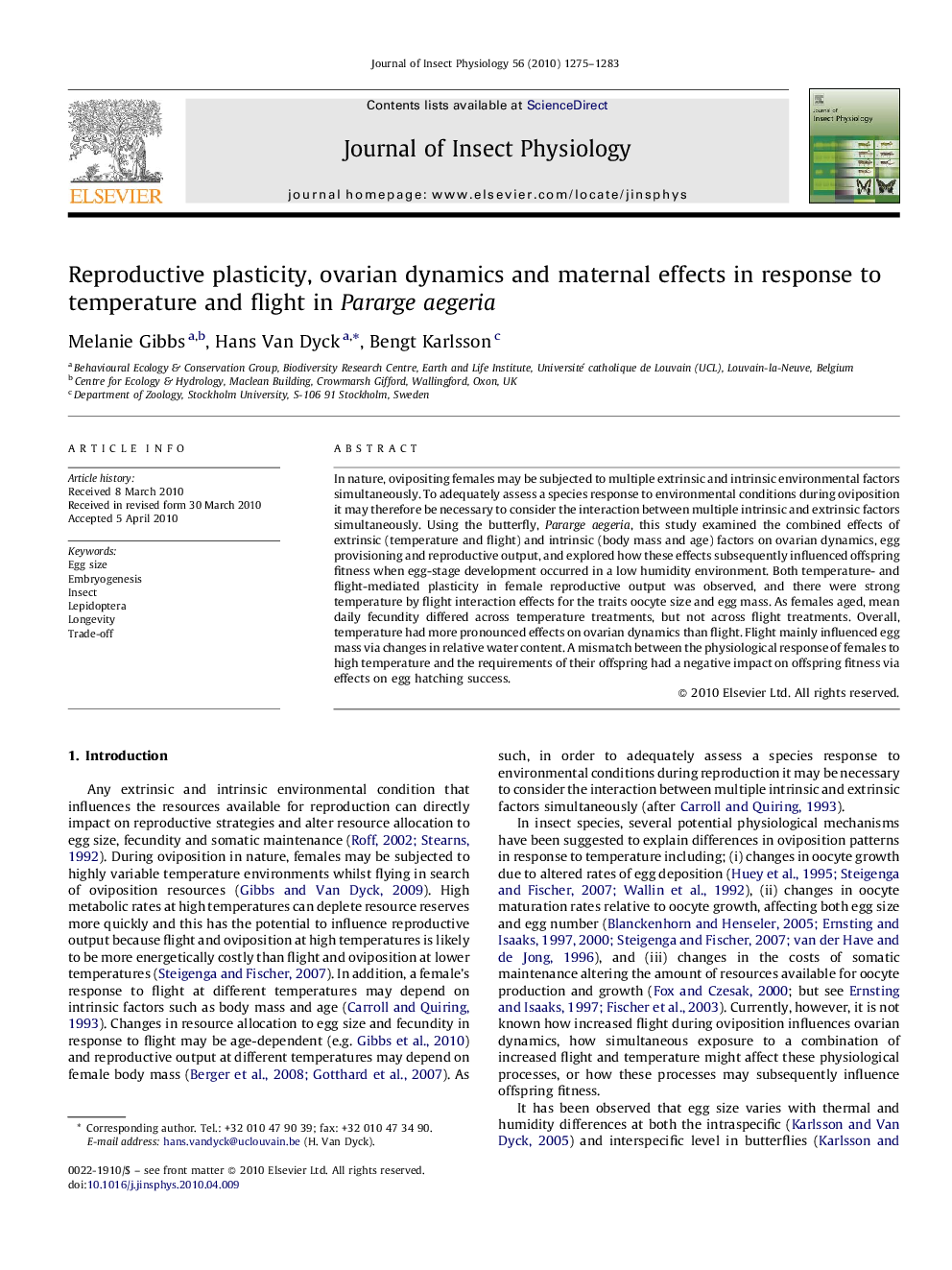| Article ID | Journal | Published Year | Pages | File Type |
|---|---|---|---|---|
| 2840944 | Journal of Insect Physiology | 2010 | 9 Pages |
In nature, ovipositing females may be subjected to multiple extrinsic and intrinsic environmental factors simultaneously. To adequately assess a species response to environmental conditions during oviposition it may therefore be necessary to consider the interaction between multiple intrinsic and extrinsic factors simultaneously. Using the butterfly, Pararge aegeria, this study examined the combined effects of extrinsic (temperature and flight) and intrinsic (body mass and age) factors on ovarian dynamics, egg provisioning and reproductive output, and explored how these effects subsequently influenced offspring fitness when egg-stage development occurred in a low humidity environment. Both temperature- and flight-mediated plasticity in female reproductive output was observed, and there were strong temperature by flight interaction effects for the traits oocyte size and egg mass. As females aged, mean daily fecundity differed across temperature treatments, but not across flight treatments. Overall, temperature had more pronounced effects on ovarian dynamics than flight. Flight mainly influenced egg mass via changes in relative water content. A mismatch between the physiological response of females to high temperature and the requirements of their offspring had a negative impact on offspring fitness via effects on egg hatching success.
